 |
 |
 |
| |
LONG-TERM EVALUATION OF HCV RE-INFECTION
RATES AMONG INNER CITY VULNERABLE POPULATIONS
|
| |
| |
AASLD 2021 Nov 12-15
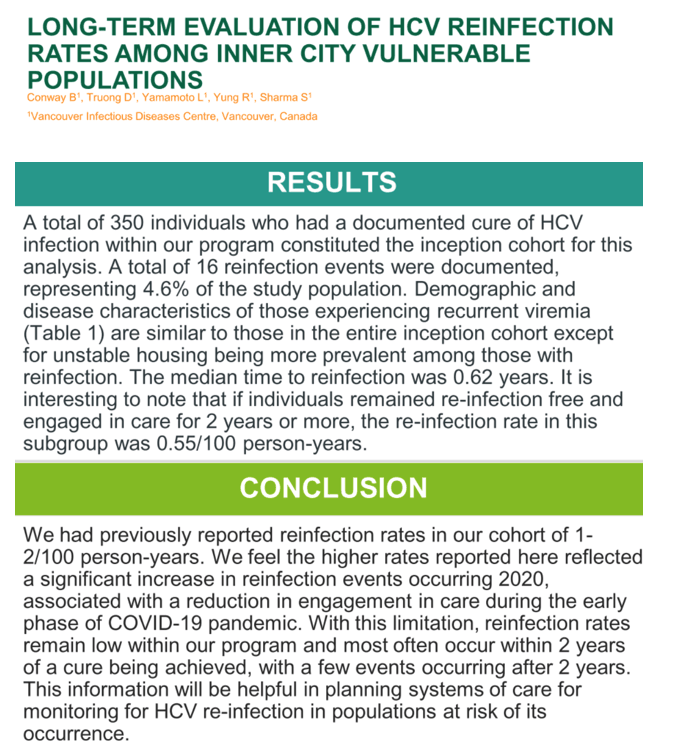
Background: One of the factors limiting HCV treatment programs among inner city residents is concern about recurrent viremia after successful treatment. Although meta-analyses suggest this rate may be 2-3/100 person-years, some cohorts report rates 5-10 times higher. Among programs that have been providing HCV therapy in this setting for 10 years or more, there is an opportunity to address this issue longitudinally, comparing re-infection rates as a function of time especially as patients are maintained in long-term care after HCV cure.
Methods: We accessed the longitudinal data base of our centre from January 2017- May 2021 to evaluate the rate of recurrent viremia after a cure of HCV was achieved among individuals with documented ongoing drug use. This analysis focused on the crude rate of HCV re-infection as well as rates per chronological year, time post-HCV cure and any correlates of these outcome measures.
Results: We evaluated 537 individuals who met the entry criteria, 16 (3%) of whom had documented re-infection. Number of reinfections per chronological year varied from 0-8, with the highest rate in 2020. The average time post-cure for a re-infection event was 12.1 months, with 87.5% within 2 years and 12.5% after 5 years.
Conclusion: In comprehensive programs such as ours favoring maintenance in long-term follow-up after HCV cure, reinfection rates remain low and most often occur within 2 years, with few if any events occurring after 5 years. This information will be useful in planning systems of care for monitoring for HCV re-infection in populations at risk of its occurrence.
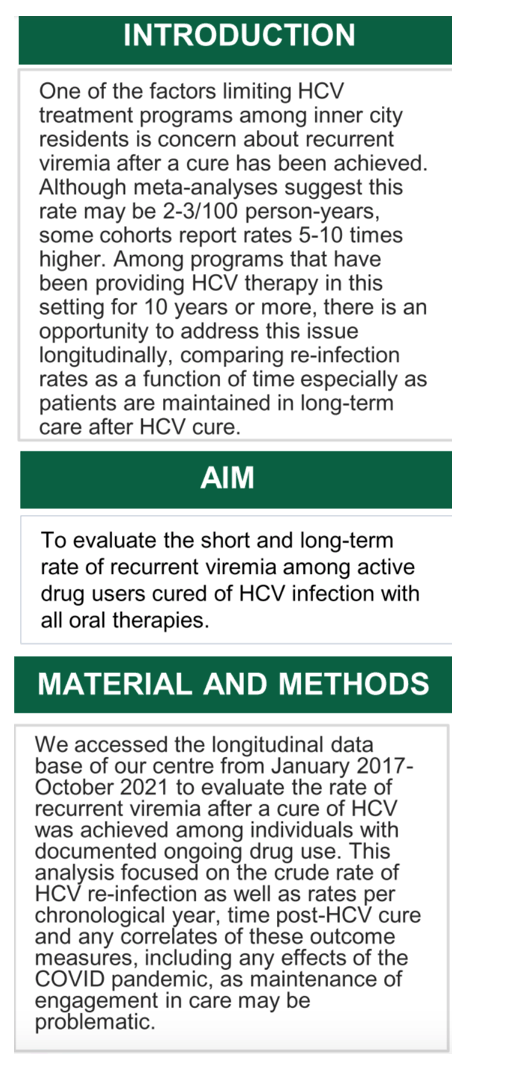
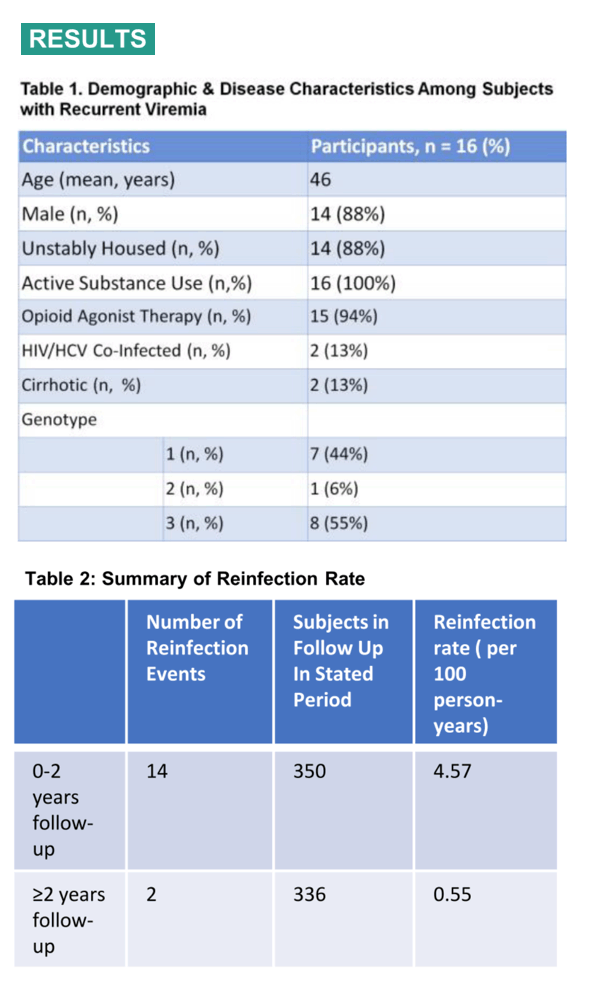
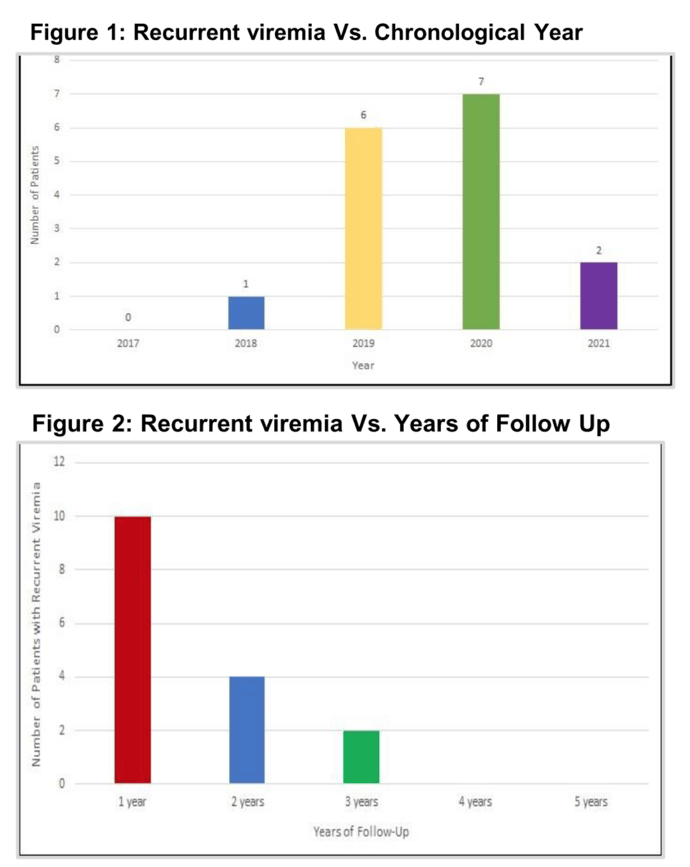
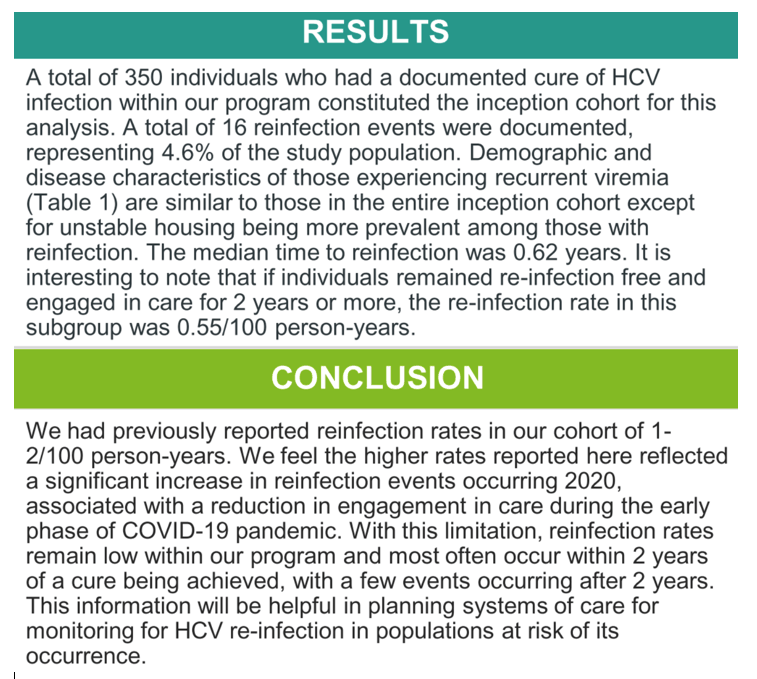
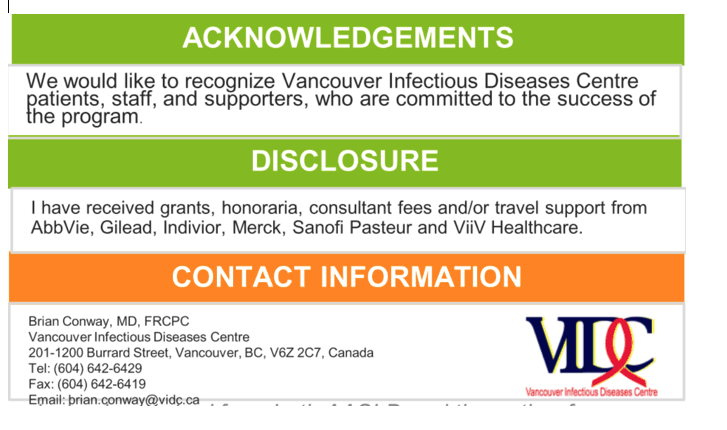
|
| |
|
 |
 |
|
|